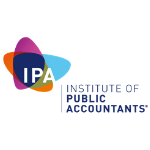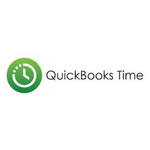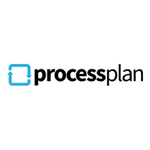Working From Home? Track Those Deductions!
March 24, 2020
Tax deductions for home office expenses
If you're an employee who regularly works from home, you may be able to claim a deduction for expenses relating to that work. These are generally home office running expenses, and phone and internet expenses.
Where home is your principal workplace (for example you while you cannot attend your office), you can also claim occupancy costs.
Expenses you can claim
Check out the table below for the expenses you can claim as well as the three ways you can work at home:
Running expenses
If you work from home, you can claim the work-related proportion of your running expenses. These include:
- home office equipment including computers, printers, telephones and furniture and furnishings.
- heating, cooling and lighting.
- cleaning costs.
- other running expenses including computer consumables (for example, printer paper and ink) and stationery.
Calculating running expenses
There are two ways to calculate your running expenses:
- you can claim a fixed rate of 52 cents per hour; or
- you can calculate your actual expenses.
Fixed rate
Instead of recording all of your actual expenses for heating, cooling, lighting, cleaning and the decline in value of furniture, you can claim a deduction of 52 cents for each hour you work from home.
This rate is based on average energy costs and the value of common furniture items used in home business areas.
To claim using this method keep records of your actual hours spent working at home for the year, or keep a diary for a representative four-week period to show your usual pattern of working at home.
You need to separately work out all other home work area expenses, such as:
- phone and internet expenses
- computer consumables and stationery
- decline in value on computers or other equipment.
Actual expenses
To calculate actual expenses if you have a dedicated work area, you:
- keep a record of the number of actual hours you work from home for the year, or keep a diary for a representative four-week period to show your usual pattern of working at home
- work out the cost of your cleaning expenses by adding together your receipts and multiply it by the floor area of your dedicated work area (floor area of the dedicated work area divided by the whole area of the house as a percentage). Your claim should be apportioned for any private use of your home office and any use that other family members make of the home office
- work out the cost of your heating, cooling and lighting by working out the following
- the cost per unit of power used - refer to your utility bill for this information
- the average units used per hour - this is the power consumption per kilowatt hour for each appliance, equipment or light used
- the total annual hours used for work-related purposes - refer to your record of hours worked or your diary for this information.
You must also take into account the use of this area by other members of your household, if applicable and apportion your expenses accordingly.
If you don't have a dedicated work area, your expenses for heating, cooling and electricity should be calculated by determining the actual cost of running each unit you used per hour and multiplying that by the hours you worked from home. The amount of the additional expense is generally small. This will particularly be so where there are other people using the area at the same time you are working. In those circumstances there is no additional cost for lighting, heating or cooling.
Occupancy expenses
You can only claim the work-related proportion of your occupancy expenses if:
- the space in the home is a place of business, and not suitable for domestic use – for example, a doctor or dentist surgery or a hairdresser studio in the home; or
- no other work location is provided to an employee by an employer and the employee is required to dedicate part of their home to their employer's business as an office – you can claim the portion of these costs that relate to a clearly identified place of business.
- rent
- mortgage interest
- property insurance
- land taxes
- rates.
Warning To Homeowners
If you claim occupancy expenses, you don't qualify for the capital gains tax (CGT) main residence exemption for the part of your home that you use for work. If you use your home as a place of business there may be CGT implications when you sell it.
Calculating occupancy expenses
If you are eligible to claim occupancy expenses, you can work them out by calculating the:
Total expenses × floor area × percentage of year that part of your home was used exclusively for work
(e.g. If the area you use for work takes up 15% of your home and you used it for work for the whole of the year, you can claim 15% of your occupancy expenses.)
Phone and internet expenses
You can claim a deduction for work-related proportion of your phone and internet expenses. You must have paid for these costs and have records to support your claims.
There are two ways to calculate your phone and internet expenses:
- you can claim up to $50 with limited documentation
- you can calculate your actual expenses.
You need to keep records for a four week representative period in each income year to claim a deduction of more than $50.
Calculating phone and internet expenses
Claim up to $50
If your work use is incidental and you are not claiming a deduction of more than $50 in total, you may make a claim based on the following, without having to analyse your bills. The rates you can use to work out the cost for your work calls are:
- 25 cents for calls made from your landline
- 75 cents for calls made from your mobile
- 10 cents for text messages sent from your mobile.
Actual expenses
If you have a phone or internet plan where you received an itemised bill, you need to determine your percentage of work use over a four-week representative period that you can then apply to the full year.
You need to work out the percentage using a reasonable basis. This could include:
- the number of work calls made as a percentage of total calls
- the amount of time spent on work calls as a percentage of your total calls
- the time you spent, or data used for work purposes compared to your private usage and that of all members of your household.
If you have a bundled or non-itemised plan, you need to identify your work use for each service over a four-week representative period during the income year that you can then apply to the full year.
Records you must keep
You must keep records of your expenses, such as:
- a diary you have created to work out how much you used your equipment, home office and phone for business purposes over a representative four-week period
- receipts or other written evidence, including for depreciating assets you have purchased
- diary entries to record your small expenses ($10 or less) totalling no more than $200, or expenses you can't get any kind of evidence for
- itemised phone accounts from where you can identify work-related calls, or other records, such as diary entries if you don't get an itemised bill.
Use our claim form to submit to us
To make things easy for you, just fill out our Home Office Expenses form
and we'll work out exactly what you're entitled to.















